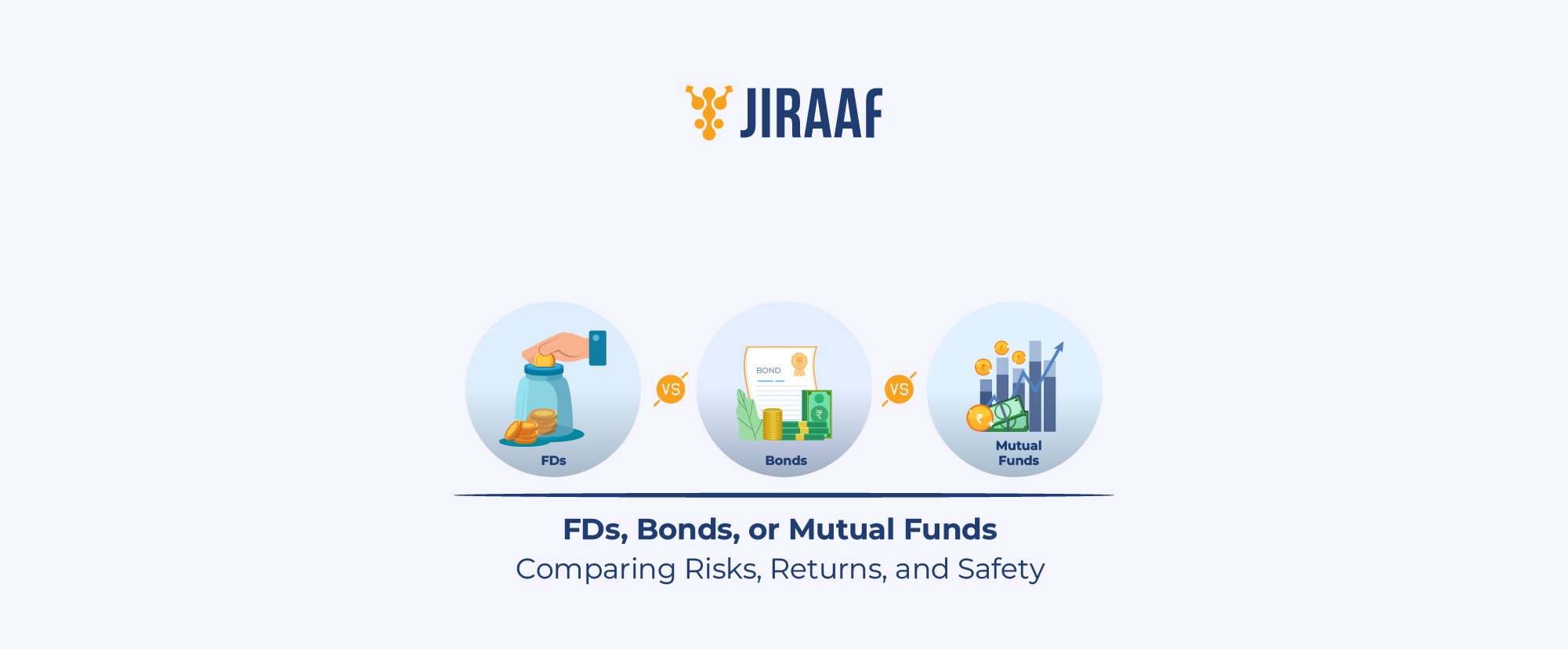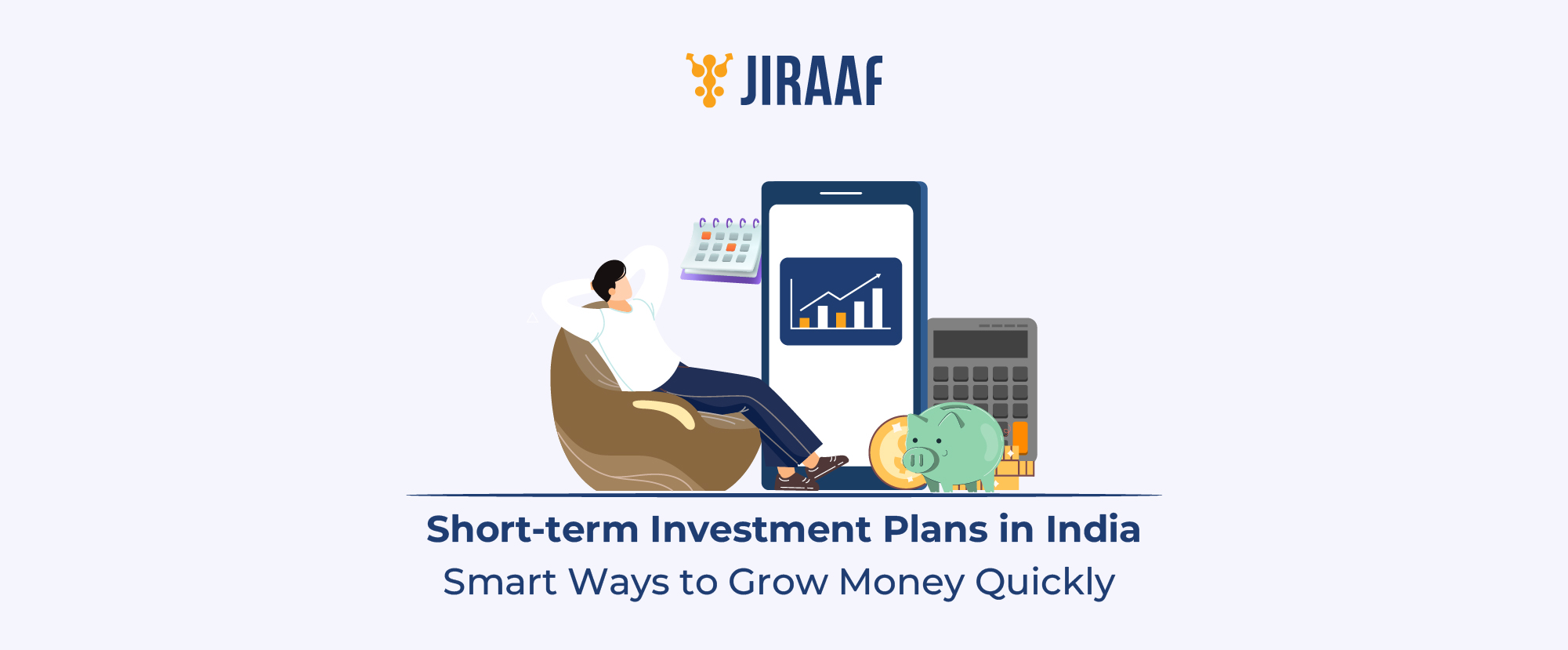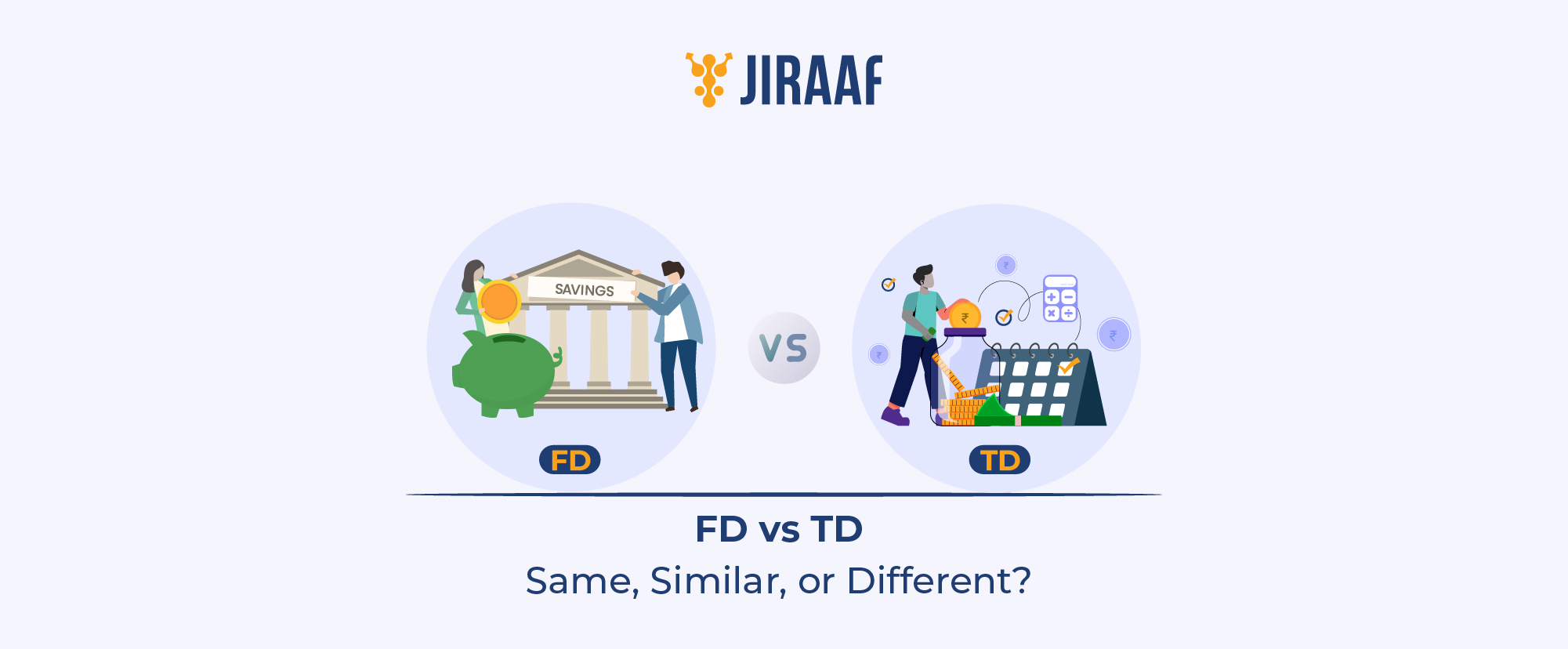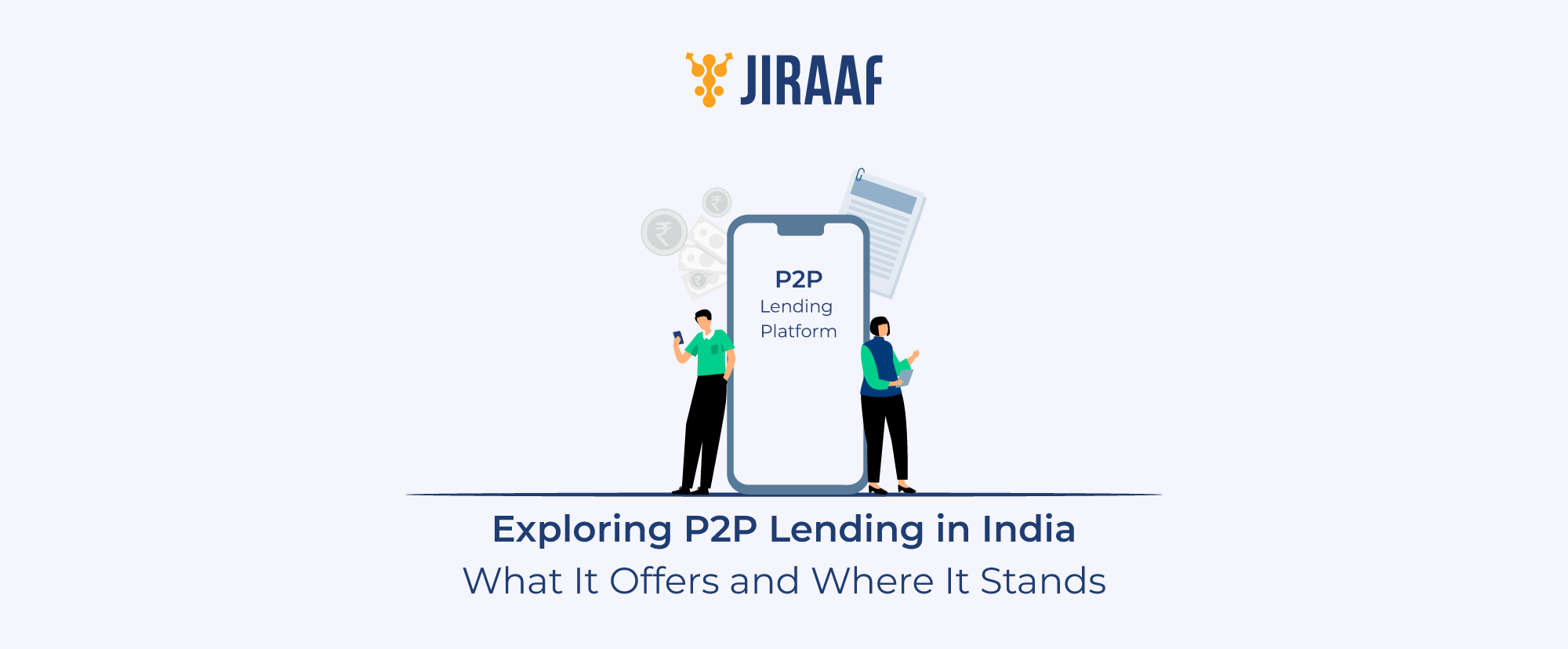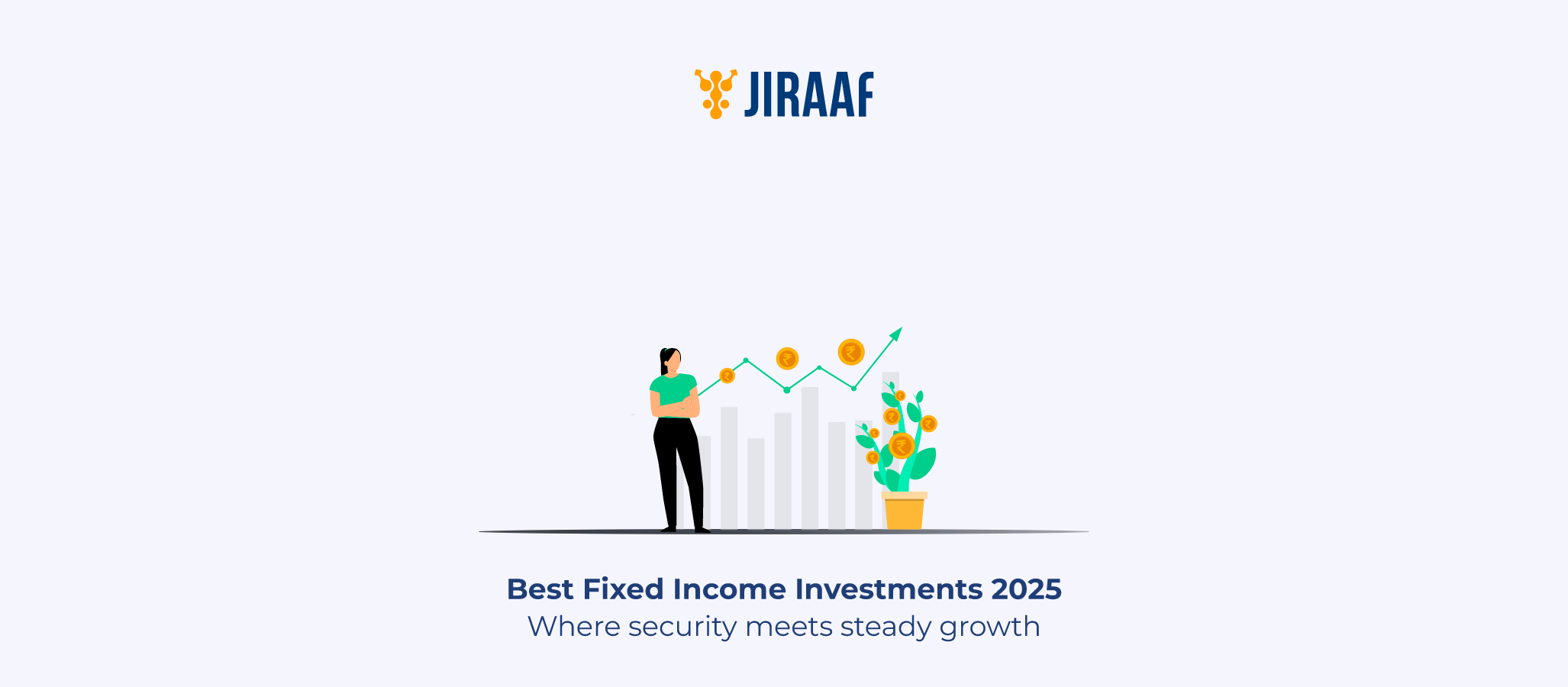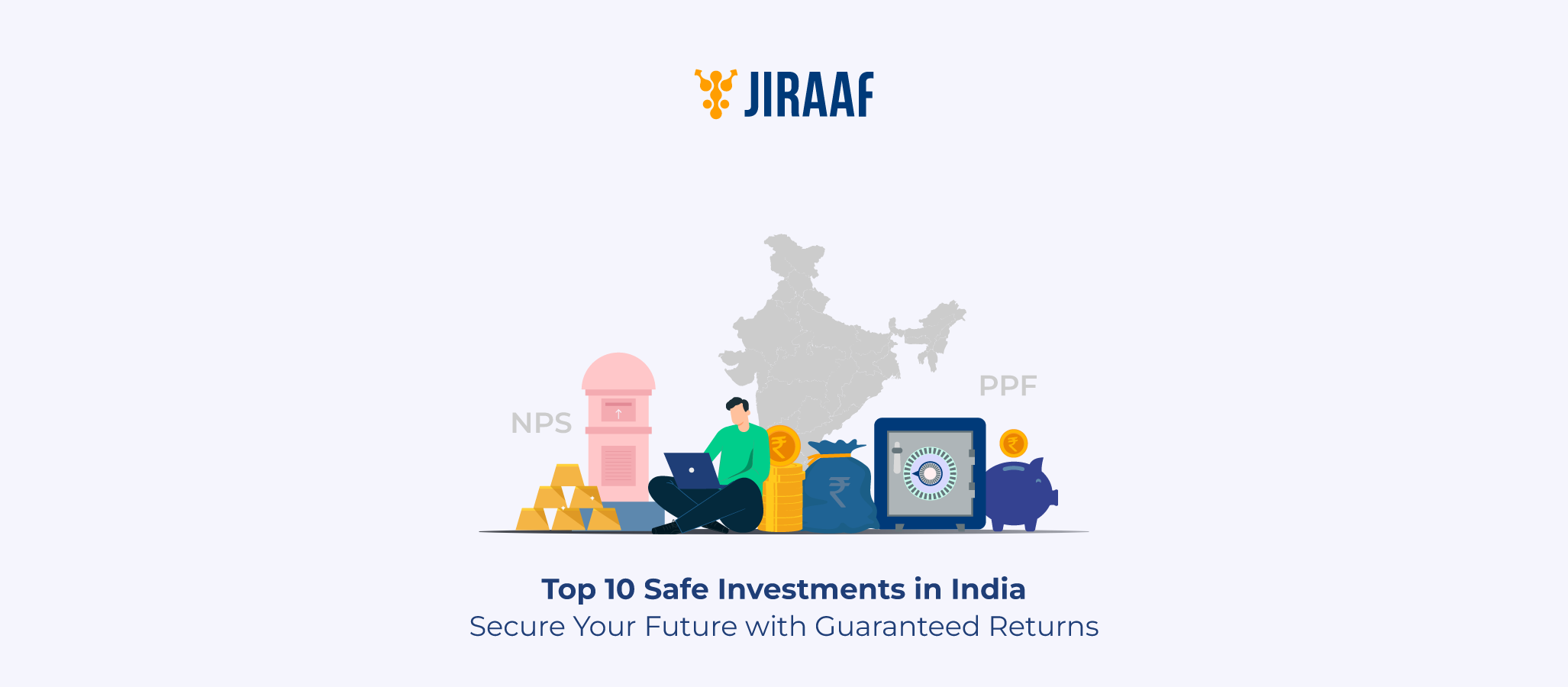For Indian investors, fixed deposits, bonds, and mutual funds each offer distinct pros and cons. FDs are prized for safety and guaranteed returns, bonds for steady income with varying risk, and mutual funds for long-term growth.
In this blog we look at each product, key differences between FDs and mutual funds, how bonds stack up against mutual funds on returns and risk, how bonds compare with FDs on safety and liquidity, and tips to pick the right fit for 2025.
Introduction to Bonds, FD & Mutual Funds
Bonds
Bonds are debt instruments where investors lend money to an issuer (government or corporation) in exchange for regular interest payments and principal repayment at maturity. Government bonds are highly safe, while corporate bonds carry varying levels of credit risk. Bonds are ideal for investors seeking regular income with moderate risk.
Fixed Deposits (FDs)
FDs are fixed-tenure deposits offered by banks and NBFCs, giving guaranteed returns and strong safety. They suit conservative investors and retirees seeking steady income. Premature withdrawals are possible but usually attract a penalty, and the interest earned is taxable as per your income slab.
Mutual Funds
Mutual funds pool investor money to invest in a diversified portfolio of equities, bonds, or other assets. Managed by professional fund managers, mutual funds can deliver higher returns over the long term compared to FDs and bonds but carry market risk. They are ideal for investors aiming for long-term wealth creation.
Now that we understand each product, let’s explore the differences between FDs and mutual funds.
Fixed Deposit vs Mutual Fund–What’s the Difference?
FDs and mutual funds are often compared head-to-head, but how exactly do they differ?
| Feature | Fixed Deposit (FD) | Mutual Fund |
| Risk | Very low. Principal and interest are guaranteed, insured up to ₹5 lakh per depositor per bank | Market-linked, risk varies by fund type (equity/debt/hybrid) |
| Return | Fixed (5–9% in 2025), unaffected by market fluctuations | Variable; debt funds 6–9%, equity funds 10–15% long-term potential |
| Type of Investor | Conservative investors, retirees, short-term savers | Investors with moderate to high-risk tolerance aiming for growth |
| Financial Goal | Short-term goals: emergency fund, weddings, education | Medium to long-term goals: retirement, wealth creation, long-term investments |
| Liquidity | Low; premature withdrawal possible with penalty | High; redemption usually within 1–3 business days |
| Tax Considerations | Interest fully taxable as per income slab | Equity funds: 10% LTCG on gains above ₹1 lakh (holding >1 yr); Debt funds (post-Apr 2023): taxed as per income slab, no LTCG or indexation |
FDs and mutual funds play different roles, but the next question is common: how do bonds stack up against mutual funds for returns and risk?
Bonds vs Mutual Funds-Comparing Returns & Risks
When analyzing Bonds and Mutual Funds, investors should look closely at investment type, returns, risks, and tenure.
| Aspect | Bonds | Mutual Funds |
| Investment Type | Bonds are fixed-income securities where investors earn regular interest (coupons) and receive the principal at maturity | Mutual funds are market-linked instruments where money is pooled and invested in diversified securities by professional managers |
| Returns | Typically, 6.5%–15% in India. Government bonds offer safer returns of 6.5%–7.2%, while corporate bonds may provide 8%–15% or more | Equity funds can deliver double-digit returns in the long run, while debt funds usually give returns like bonds but with diversification benefits |
| Taxation | Interest is taxed as per the investor’s income tax slab | Equity funds: 10% LTCG on gains above ₹1 lakh (after 1 year). Debt funds: taxed as per income slab post-Apr 2023, with no indexation benefit |
| Risk | Bonds carry credit risk (default by issuer) and interest rate risk but holding till maturity reduces price fluctuation concerns | Mutual funds face market volatility, fund management, and liquidity risks, though diversification helps reduce the impact of individual security failures. |
| Tenure | Tenure can range from 1–3 years (short-term) to 10–40 years (long-term), making them flexible for financial planning | Best suited for medium to long-term goals. Equity funds are recommended for 5+ years, while debt funds work well for horizons of 3+ years |
After returns and risks, the key question is: how do bonds and FDs differ in safety and liquidity?
Bonds vs FD–Safety & Liquidity Compared
For many Indians, safety is non-negotiable. Let’s see how FDs and bonds stack up in terms of security and liquidity.
| Feature | Bonds | Fixed Deposit (FD) |
| Issuer | Government, PSUs, or corporates; safety depends on credit rating | Banks or NBFCs; insured up to ₹5 lakh per depositor per bank |
| Minimum Investment | Typically, ₹1,000 for government bonds; higher for corporate bonds | Starts from ₹1,000, widely accessible |
| Liquidity | Moderate to high if listed; government bonds more liquid than corporate bonds | Premature withdrawal allowed but comes with a penalty; otherwise, low liquidity |
| Safety | Very high for government bonds; corporate bonds depend on issuer rating | Extremely safe within insurance limits; principal guaranteed |
| Returns | 6–15% depending on type and issuer | 3–7% fixed in 2025 |
| Best For | Investors seeking predictable income with moderate risk | Conservative investors prioritize safety and guaranteed returns |
With all three compared, the big question remains—which should you choose in 2025?
Which Should You Choose in 2025–FD, Bonds, or Mutual Funds?
The answer depends on your financial goals, time horizon, and risk appetite.
After exploring the differences between FDs, bonds, and mutual funds in terms of risk, returns, liquidity, and safety, it’s clear that each has its own strengths. FDs give peace of mind with guaranteed returns, bonds balance stability with predictable income, and mutual funds offer long-term growth potential. But the real question isn’t about which is “best” overall—it’s about which is best for you. Your financial goals, risk tolerance, and time horizon will ultimately decide the right fit.
Let’s bring it all together and see how you should approach investing in 2025.
Conclusion: Smart Investment Choices for Indian Investors
In this blog, we explored FD vs mutual funds vs bonds, comparing them on safety, risk, returns, and liquidity. The reality is that no single investment is “the best.” Instead, building a mix aligned with your goals is the smartest way forward.
Investing is not about chasing the highest returns—it’s about growing your wealth steadily while protecting it. By diversifying across FDs, bonds, and mutual funds, you can achieve both stability and growth.
